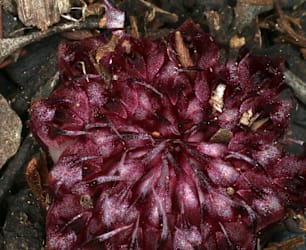By Dr Andy Lawrence
If, like me, you were a child partial to beachcombing and beach-related jewellery, you might have experienced the joy of happening upon the holy grail: a beautiful pipi shell with a perfectly carved hole through which to string a necklace chain.
My passion for collecting and studying natural ephemera led me to my PhD in taxonomy (the study of describing, naming and categorising species). Although I no longer work in science, my desire to examine beautiful or interesting things from nature is as strong as ever.
Perhaps, like me, somewhere along the way collecting little ‘holy grail shells’ you wondered how these perfectly symmetrical cavities formed.
The answer has something to do with the false jellyfish often found on the shoreline. I’m talking about those palm-sized clear jelly masses shaped like an almond crescent biscuit. You often find them in blobby pieces that are easily mistaken for parts of a deconstructed jellyfish. If you look closely, you can see thousands of tiny dots inside the sausage-shaped jelly. Those dots are the eggs of a moon snail (Family: Naticidae), the culprits also responsible for the perfectly countersunk pipi shells.
Moon snails are predatory and hang out in the sand with other sand-dwelling creatures. They are found worldwide and love to eat bivalves, which are molluscs that have two parts to their shell attached by a hinge – like pipis and mussels.
The art of drilling through another snail is achieved by a specialised tongue called a radula, which looks and feels like a hard plate with serrated teeth. This grinds against the prey shell along with acidic secretions to aid the drilling. Once the puncture is complete, the moon snail inserts a proboscis (fancy name for a sucking tube), along with digestive enzymes into the soft body of the prey snail to create a lovely pipi soup to suck through its straw.
Pretty gruesome. Being the natural history fangirl that I am, I think this story of how the shells get their holes makes them irrefutably more awesome. And if you think that moon snails get off lightly, you should know that they do engage in cannibalism and that not all prey succumb to the snail’s iron tongue.
Look through enough shells and you’ll find ones with incomplete holes where the prey managed to escape before being liquified. I’ve even found a moon snail with an incomplete drill hole from another moon snail, setting the stage for a moon snail soap opera: a story of attempted cannibalism and thwarted murder.
So, next time you’re sifting through the sand at the beach, maybe you’ll notice a shell with a drill hole and see the ever-unfolding drama of mollusc life within the sand.











